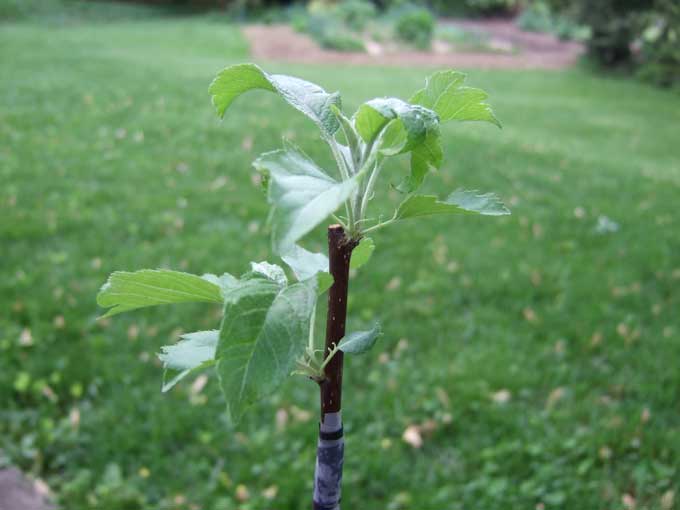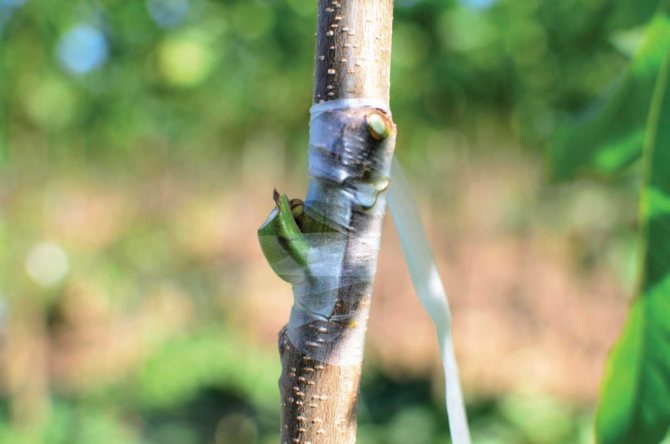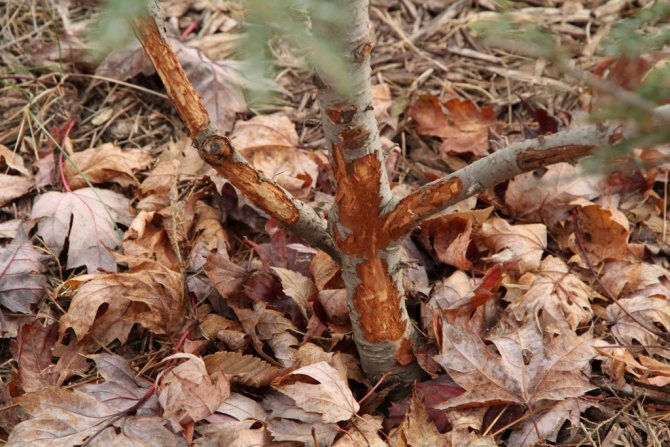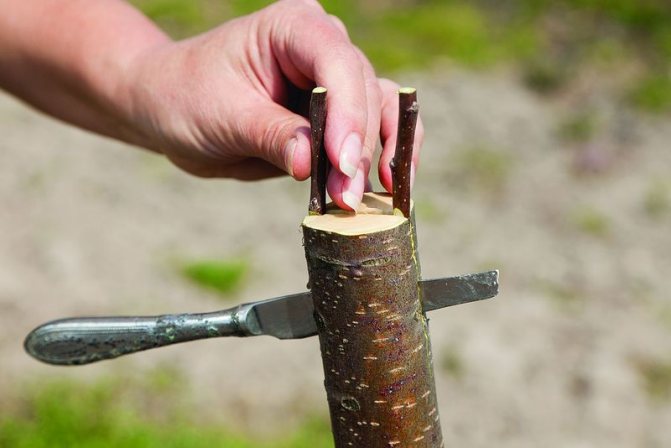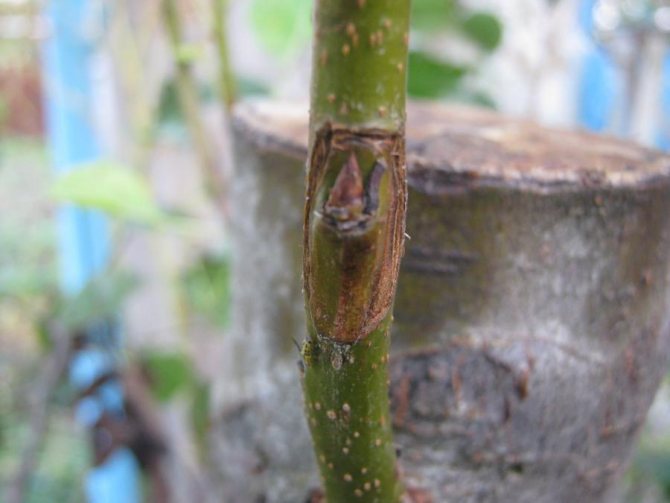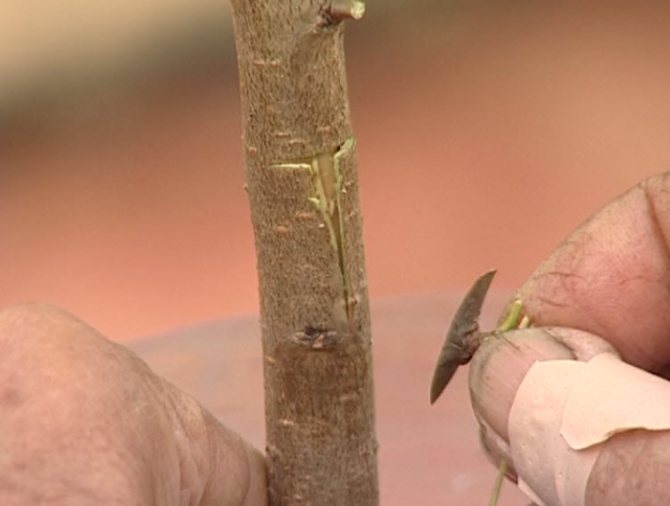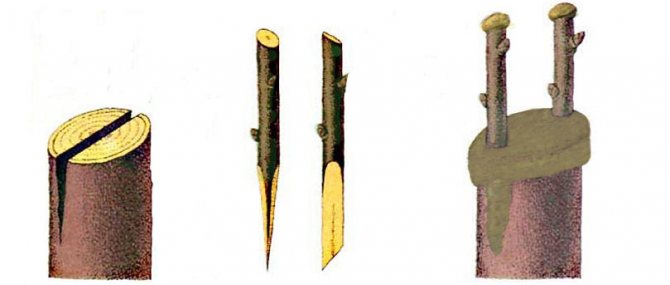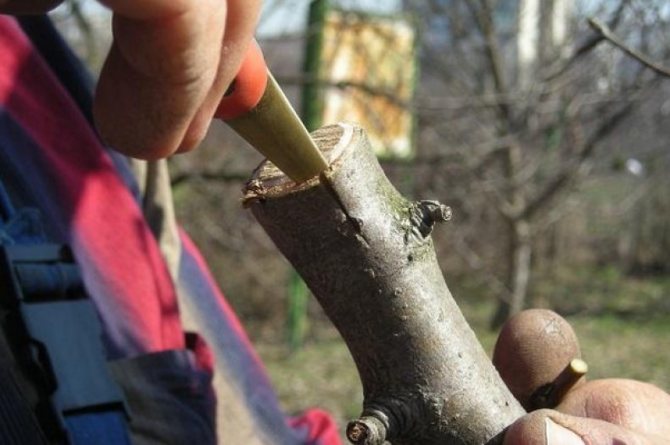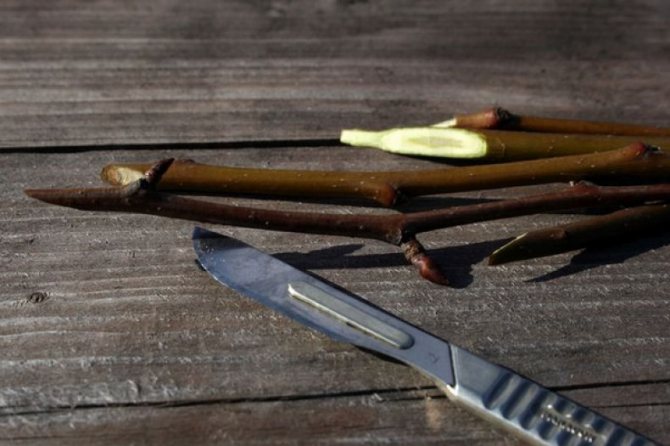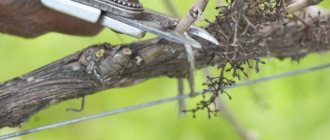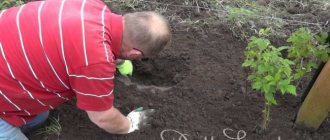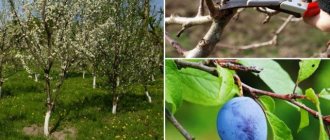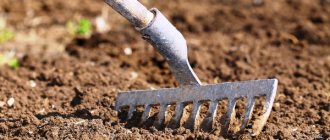Pear grafting is the transplanting of a part of a cultivar (scion) onto a wild-growing species or another cultivar (stock). As a scion, it can act as a shoot with several buds (cutting), single and a bud with a thin layer of wood and bark (scutellum, peephole). The stock can be either a wild pear or an old cultivar tree.
In gardening, pear grafting methods are used, such as:
- Budding (inoculation with an eye);
- Copulation (grafting by cutting);
- Into the cleft;
- Bark grafting;
- Bridge inoculation;
- In the side cut;
- Ablactation.
The main purpose of grafting in private gardening is to save an old fruit-bearing tree from being cut, growing 2 or more different varieties on it.

Pear grafting
This article will consider the choice of rootstock, the technique for performing various types of grafting, and caring for grafted trees at the initial stage.
Pear grafting goals
Possible goals of vaccination:
- Vaccination is used if you want to prolong the youth of your favorite variety.
- If you don't want to wait several years to taste the harvest. The seedlings will delight with the first fruits in at least 4 years. But vaccination will significantly speed up the process.
- The plant is grafted to give it the properties of the best variety. It happens that gardeners are not always satisfied with a growing tree that produces tasteless or medium-sized fruits.
- Carried out for breeding a new variety. By combining different varieties, a seedling is obtained that inherits the best properties of both plants.
Why plant a pear: benefits and challenges
The main goal and main advantage of grafting is the ability to grow a demanding variety on a more stable rootstock.
The main tasks that help to solve pear vaccinations:
- You want to cultivate the wild and plant a varietal pear on it (in other words, propagate it).
- Not satisfied with the planted variety, and you want to re-graft it to a more suitable one.
- You have a compact (small) area, and you want to have several varieties on one tree at once.
By the way! You can plant varieties of different ripening times to harvest ripening pears throughout the summer and early fall.
- Accelerate fruiting.
- Rejuvenate an old tree.
- Save the tree (for example, if the bark is damaged by hares or mice).
- Propagate a favorite or just a rare variety.
And sometimes grafting is the only way to grow a particular strain in harsher climates.
Video: why do you need to plant fruit trees
What trees can you graft on?
Nurseries like to use a dwarf or semi-dwarf stock. This is due to the speed and ease of reproduction. The resulting plant is allowed to be planted in an area with a close location of groundwater.
Various cultivated plants can serve as a stock. Let's consider the best options.
For a different kind of pear
A pear is allowed to be grafted onto the same plant. It is impossible to graft on a pear that has a different ripening period. This will shorten the life cycle of the tree..
Advice:
- They are grafted onto semi-cultivated pear varieties that are grown in our climate. On these trees, the scion will grow together better and will develop successfully.
- If a late variety is grafted onto an early pear, then by winter the plant will still bear fruit.As a result, there is a high probability that the first frosts will completely destroy the tree.
- The Ussuriyskaya pear will serve well as a stock. You will get a new winter-hardy culture. But not all varieties take root well on this rootstock, so you have to tinker with the grafting.
On a mountain ash
A culture grafted onto black chokeberry will produce a plant with high frost resistance. Late pear varieties can be grafted onto it without fear. The new tree will be compact, which will facilitate easy harvesting. When vaccinated, a fourth of the rowan shoots is left. This is a prerequisite, otherwise the plant will not receive the necessary amount of nutrients for fruiting. On the new tree, the fruit will acquire a tart and rather sweet taste.


On a wild pear
If you use the wild, then thanks to the vaccination, it will be possible to get a full-fledged pear with remarkable characteristics in a short period of time.
On quince
Grafting on this plant, the result is a low-growing culture. The pear will bear fruit early and have a weak frost resistance. Therefore, this option is not suitable for regions with severe winters and late spring frosts. There is a high probability that the crop will never appear.
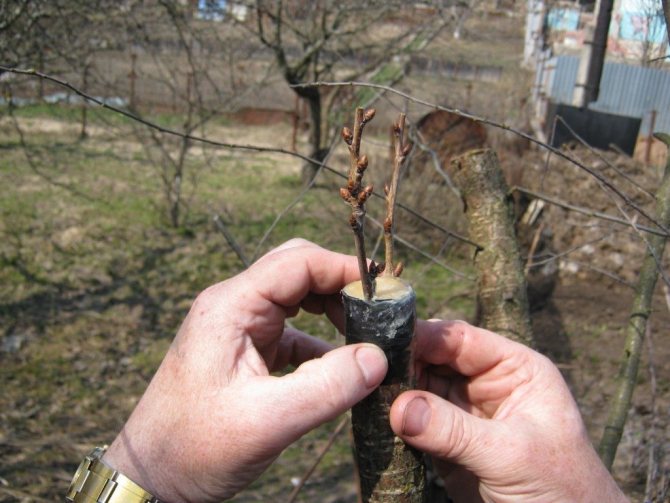

But in temperate climates or with good shelter in cold areas, a compact tree will grow, giving the maximum result.
The fruits will acquire a new, unusual flavor that everyone will appreciate.
On the plum
It is better to plant on a wild plum. It is highly resistant to harsh climates. Therefore, the new tree will grow resistant to bad weather conditions and severe frosts.
See also
Description and characteristics of pears of the August dew variety, ripening dates, planting and careRead
To the apple tree
Grafting will create an unusual tree. As a result, apple and pear branches will be located on the plant. Based on practice, vaccinations do not always take root. But the attempts are worth it.
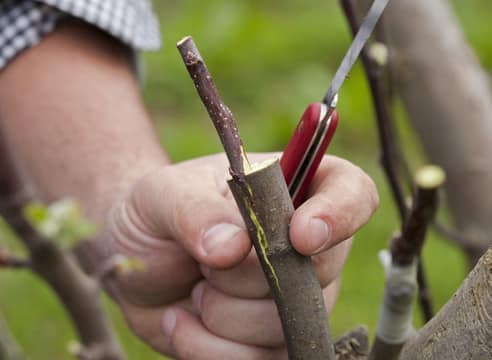

On irgu
Vaccination for irgu is popular. As a result, the gardener gets the fruits of the original taste and an excellent fruiting plant that gives an early, maximum yield. Vaccination should be done low. Height is no more than 20 centimeters. Otherwise, branches will often break off due to the weight of pears and winds. The plant begins to bear fruit in the second year.
Columnar grafting


The main requirement for any tree growing in a summer cottage is ease of maintenance. Because of this, many gardeners choose columnar apple trees for their yards. They require almost no pruning and produce delicious fruits. Basically, these varieties include dwarf plants. A pear of a similar type can be grafted onto a columnar apple, which will expand the flavor range of the fruit.
Often the procedure is done not out of a desire to increase yields, but out of necessity. It occurs when the branches of the apple tree are damaged. Then a pear or other plant is grafted onto the tree. However, not every variety will do. To increase the survival rate, experienced gardeners recommend taking columnar cuttings. This will not only make the procedure successful, but will also keep the shape of the crown.
Optimal timing of the procedure
They can be different:
- In the autumn. Vaccination is carried out using cuttings, which were prepared in the spring. They need to germinate 1-2 months before the onset of frost.
- In summer, you can graft with fresh cuttings. Favorable time comes in July. But if during this period it is not possible to get vaccinated, then you should not be upset. Summer vaccination can also be carried out in August.
- In the spring. For this, cuttings are harvested in the fall. They are placed in a dark, cool place, and the ends are covered with wet sawdust. The procedure is carried out in the second half of spring, but before the start of sap flow. This will provide a high survival rate.
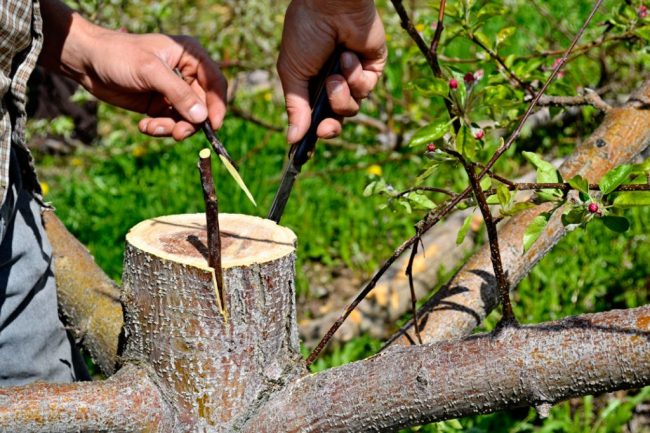

Rules for the selection and storage of a scion for pear grafting
Next, we will consider how to properly prepare the scion in the fall and save it until the spring pear grafting.
What should be a quality scion
A high-quality graft is the key to a successful vaccination!
For grafting pears, cuttings for the scion should be prepared, which need to be cut from annual (in rare cases, two-year) branches at the top of the crown with south or west side, and it is from the middle part of the shoot. The cut itself is carried out on the annual ring between the growth of the last and this year. As for their quantitative characteristics, quality grafts should be with a diameter of 5-8 mm (with a pencil) and length 20-40 cm (already directly during vaccination, cut to the recommended number of kidneys - 2-3).
Cuttings should have exactly vegetative buds, rootstocks with fruit buds cannot be used.
The grafting material should look fresh, free of frost and damage. Therefore, before vaccination, it is recommended to make sure of its quality without fail. It is very simple to check this - on the cut, the cuttings should be as light (green) as possible.
Important! One of the popular ways to determine the viability of the cuttings for grafting is to bend it. If this was done easily, then the stock (cutting) is quite suitable for the procedure.
Directly during the vaccination procedure prepare the stalk (cut), leaving 2, maximum - 3 buds on it (optimally - still 2).
When to harvest and how to store cuttings (rootstocks)
Despite the fact that pruning trees in the autumn is undesirable, it is most convenient to harvest cuttings at this time. Therefore about scions (cuttings) it is worth taking care in advance and preparing them in the fall, before the onset of stable frosts.
However, this can also be done shortly before the vaccination procedure itself, during the annual spring pruning pear.
But in this case, you need to be sure to have time before the start of sap flow (swelling and even more blooming buds), while the tree is still in the dormant stage.
Video: grafting cuttings - how, where and when to cut
Storage
After the autumn harvesting of cuttings, they must be kept in good condition until spring and to prevent the premature start of the growing season.
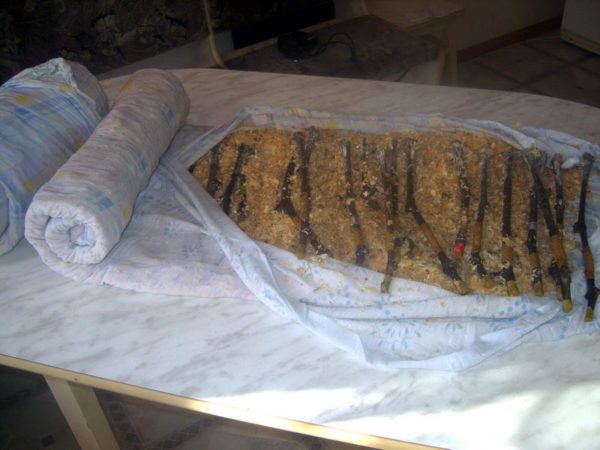

The best way to store cuttings is wrap them in a damp material (cloth), and even better in moss or sawdust and put in a perforated bag.
In addition, they can be stored outdoors, digging in the yard (if you live in a private house), under the snow.
The main thing - keep the temperature low and prevent the cuttings from drying out... Therefore, for storage will go basement, cellar or refrigerator, in other words, a place where the temperature is kept in the region of 0 .. + 4 degrees.
Advice! It is imperative (at least once a month) to periodically take out and inspect the cuttings (future grafts) for damage by mold or fungi.
Vaccination methods
There are various vaccination technologies. Each method should be analyzed in more detail.


Copulation
This method is used when the thickness of the branches is the same. For this, the places of the cuts are connected and tied tightly. Process:
- The cut is made oblique. To do this, use a sharp garden knife.
- The shoot is chosen of the appropriate diameter and strong. Cut a small stalk.
- The bottom of the cut should be the same size as on the grafted tree. When the slices are prepared, do not touch them with your hands.
- Attach the cutting so that the two plants connect.
- Tie and secure with tape.
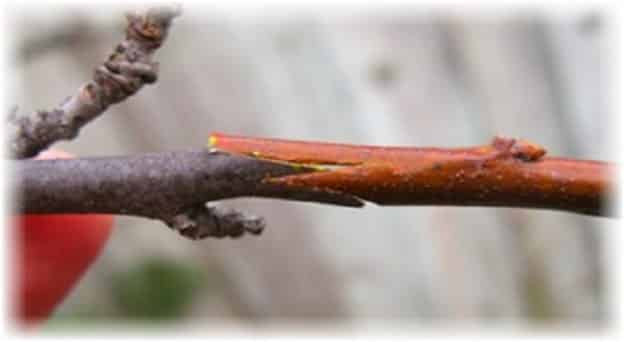

Into the cleft
This method is the most popular. Algorithm of actions:
- The diameter of the scion is chosen several times less than the thickness of the rootstock. The technology helps to simplify splices and increase success rates.
- The stock is cut with a sharp secateurs. A split is made in the center of the hemp with a knife. The depth will be about 5 centimeters. For the scion, the lower part of the branch is cut off, which will look like a wedge, and inserted into the split.
- Around they are coated with garden varnish and the places of contact are tied with a film. After 3 months, it is removed.
Usually old trees are planted. This procedure helps to rejuvenate the plant and restore its fruiting. It also extends the lifespan of the culture.
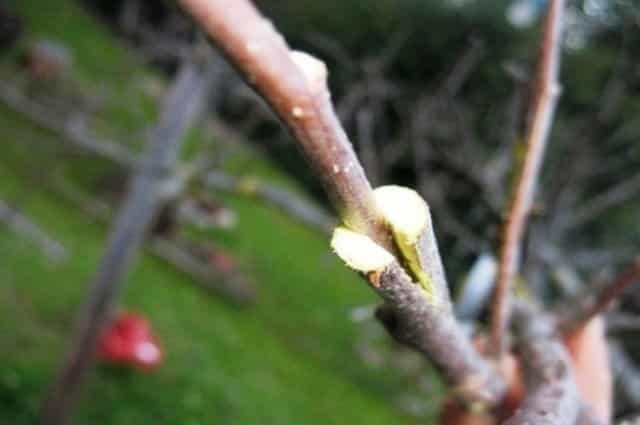

Budding
Algorithm of actions:
- Inoculation is carried out using a kidney attached to the rootstock shoots.
- It is enough to make a small incision on the rootstock stem, attach the scion and wrap tightly.
For inoculation with an eye, you can use the material harvested last year.
For the bark
A distinctive feature of this method is its ease of implementation. Recommended for beginner gardeners:
- Using a sharp knife, a cut is made on the rootstock, which should be vertical. Length 3 centimeters.
- The resulting incision is pushed back and a scion with a bare cambium is placed in the resulting free space.
- An important point to consider is that there should be 2 swollen buds on the scion.
- Grease the connection with a pitch, then wrap it up using polyethylene.
- After 3 months, the junction will overgrow. Leaves form on the scion, and soon a sprawling, well-fruiting tree will grow from it.
See also
Why do leaves on a pear tree turn black, what to do and how to treat, how to deal with a diseaseRead


Side cut
Basic actions:
- Cut off the cutting at the bottom to form a uniform wedge.
- At the side of the rootstock, make a cut of the same size as the wedge.
- Connect the two parts. Smear with garden varnish.
- Tape the vaccination site with tape.
The procedure is carried out in April.
By the bridge
This method is used if the bark has been damaged by hares. A special bridge helps restore nutrition to the crown and revive the tree. Process:
- In the damaged area, parallel cuts are made in the bark. The size is about 3 centimeters.
- Cuttings that have been prepared in advance are inserted into the places obtained, and coated with pitch.
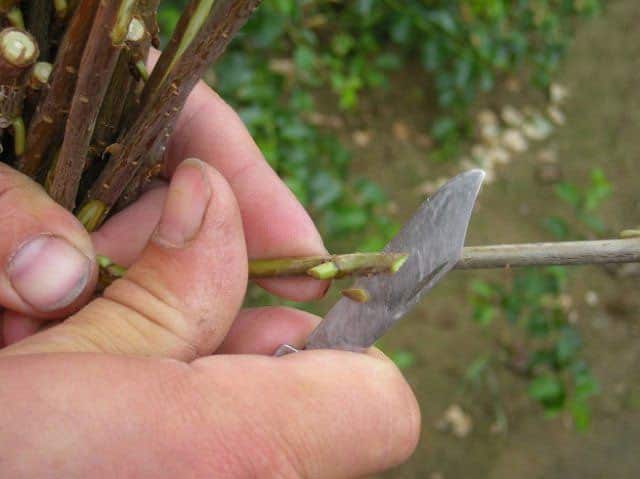

Ablactation
The method is aimed at saving a mature tree. The time of the event is May. The rootstock and the scion are connected by closeness. Sequence:
- Cut the bark into the scion and rootstock of the same length.
- Bring the parts closer so that they connect.
- Coat the joints with plasticine and wrap with a tourniquet.
- Remove the tourniquet after 3 months. Cut the shoots, then detach the rootstock branch.
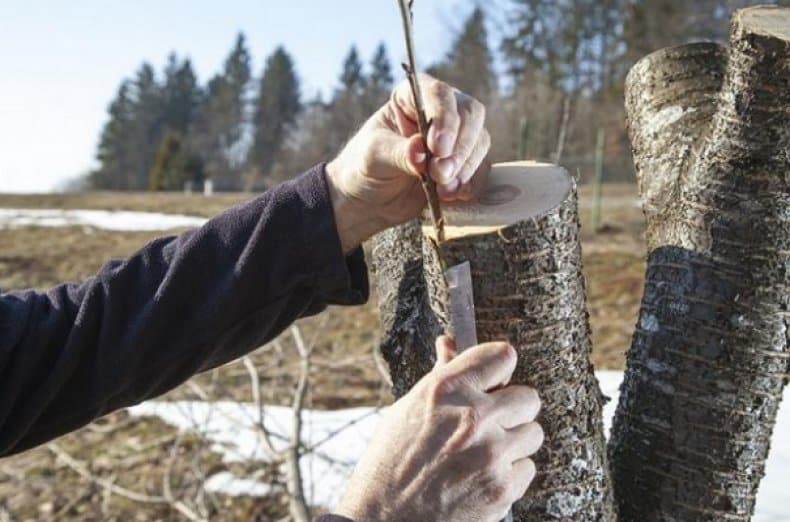

How to plant a pear in the garden correctly?
For work, you will need a sharp knife, a garden varnish to protect against viruses, poetry, and a strapping tape. The pear is grafted in three main ways:
Follow the instructions step by step, following the directions exactly. The algorithm of actions is clear even for novice gardeners.
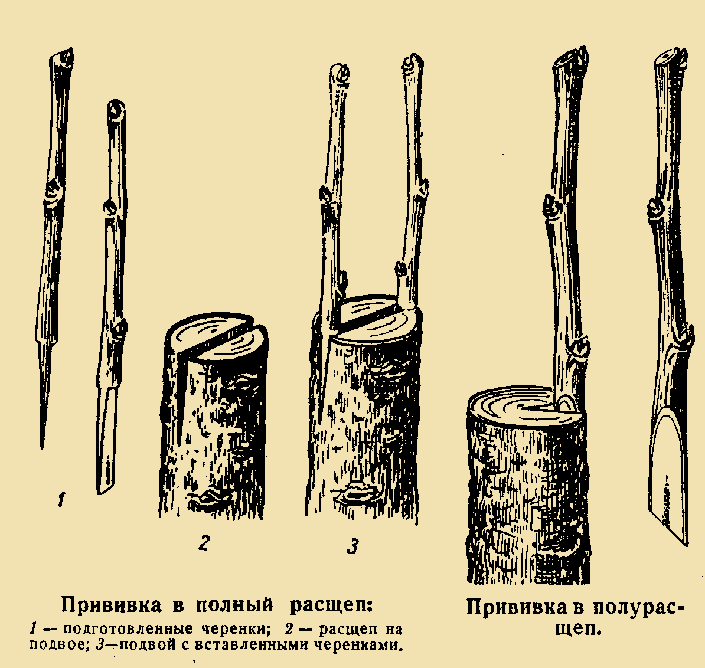

This method is used when the "donor" is smaller in diameter compared to the stock.
- Cut a branch on the rootstock and make a split at least 5 cm deep at the cut with a knife.
- Insert the scion there and coat the cleavage with garden varnish.
- Tie the treated area of the tree with special tape.
It is important to consider! It is better to pin on the north side of the culture for better survival. Graft 2 branches at once to reduce the risk of scion dying.


If the diameter of the cutting is less than the rootstock, the pear tree is grafted under the bark:
- The bark of a shrub or tree is cut in a T-shape.
- The process is inserted into the slot.
- The place is treated with garden pitch.
- The trunk is pulled together with a film, cloth or textile tape and fixed in this position.
Budding


- Cut into the stem of the stock.
- Attach the cutting to the cut.
- Garden var is applied.
- Secure the transplanted twig with tape.
Remove shoots below the graft site to ensure adequate nutrition for the scion rootstock.Such measures are also used in the fight against root shoots with standard inoculations.
Water the trees during a hot, dry season. Spraying in the morning and evening is desirable.
The pear grafting site is monitored. With the violent growth of the scion, the tape can pull off the cuttings, which will negatively affect their development, they may even break off. The tape is loosened by bandaging periodically once a week.
The vaccination site is examined after 3 weeks. If the kidneys are green, the operation is considered successful - the fusion of the rootstock with the scion is successful.
Step-by-step vaccination
For novice gardeners, the budding method is best suited. To avoid mistakes, you must follow the detailed description:
- A young seedling is used for the stock, which can be purchased in a specialized nursery.
- The procedure is carried out in the last days of July. You can also vaccinate in the first decade of August.
- Rake off the soil around the rootstock stem so that the root collar appears.
- Remove all branches at a height of 11 centimeters from the soil and wipe with a damp cloth.
- Use a sharp knife to make a T-cut. Length 3 centimeters.
- Now you need to properly prepare the cuttings. To do this, use a cutting from a varietal plant and cut off a developed bud. The adjacent fabric (flap) will also need to be trimmed. The scutellum is made the same length as the cut in the rootstock.
- Move the T-cut with the edge of the knife. Place the handle there and press firmly with your finger.
- Tie the handle to the stem with electrical tape. Wrap in such a way as to completely cover the flap, but leave the kidney.
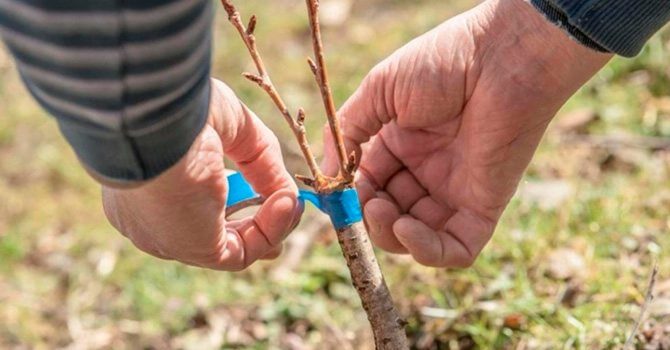

How to plant a pear correctly?
In the orchard, apples, pears, plums and cherries are grown. When space is scarce, gardeners are looking for ways to plant a pear or other trees. An increase in the number of crop varieties from one tree is also used when growing unattractive crops on the site.
Novice gardeners, before studying the material, need to get acquainted with the main terms:
- The stock is considered to be a tree or shrub on which the operation will be carried out.
- A graft or a branch of a pear of the desired variety is considered a graft or a donor.
Post-vaccination care
To vaccinate a plant is half the battle, the main thing is to provide proper care after that:
- After 3 weeks, the plant is examined. If the kidney is green and not dry, then the procedure was performed correctly, and the vaccine took root.
- Remove the harness before the winter cold. But if the electrical tape does not pinch the tissue of the culture, then it is better to postpone this process until the onset of spring and remove it after the snow melts.
- Before the buds swell in spring, the stock should be cut slightly above the graft and covered with garden varnish.
- The plant is watered all season, and the trunk circle is loosened. Weeds are also constantly removed.
- A year later, the culture is transplanted to a permanent place.
Pear: grafting (video)
Routine post-grafting tree care includes activities such as regularly checking new buds, as well as podoculating, loosening, and completely removing the trim. Completed vaccinations begin to grow back about three weeks after the event. There is a noticeable overgrowth with emerging shoots that form from the buds located below the graft. Extra branches are formed from the long residues of grafted shoots and should be removed directly at the base.
Frequent mistakes
The most common mistakes beginners make are:
- Poorly fixed stalk. It should fit snugly against the base.
- Incorrectly selected stock. Winter-hardy plants should be chosen.
- Incorrectly prepared cuttings. They are harvested in the fall. Cut off early will not mature or take root. Harvested after frost - will freeze.
- The procedure was carried out for a long time. Vaccination must be done quickly.
If the kidney vaccination method is chosen, then attention is paid to its condition.If it has dried out or changed color, then it cannot be used for the procedure.
How to plant a pear in spring: step by step instructions
Grafting a pear cut is an interesting gardening technique with which you can add variety to your garden and your diet, to get the opportunity to remove varietal fruits from an ordinary pear or other tree. After all, it might just be curious to try something new. The reasons may be different, but it does not hurt to study the theory before embarking on an exciting activity for breeders - vaccination.
Spring grafting is most natural for the pear, although it can be done at other times. With this procedure, you can revive a dying tree, correct crown imperfections, improve plant properties and fruit quality, and even breed a new crop!
How to prepare cuttings


Grafting will require cuttings that have grown over the past year. You can cut them yourself or buy them in specialized stores or on the market. The success of the procedure depends on the quality, correct pruning. The stalk is cut from the top of the branch or its lateral part. The bark should be smooth, even without signs of damage. The cutting should have at least 4 leaf buds, about 25 cm long. Cut at the site of the kidney ring - the circle dividing the parts of the branch.
If grafting is planned in the spring, cuttings are cut in the fall after the foliage has fallen. It is advisable to cut the cuttings from the south side. Slices are treated with garden varnish to prevent the penetration of infection. If different varieties are cut, then the cuttings are tied in bunches, signed. The prepared material is buried in the ground to a depth of 20 cm, covered with leaves, straw, additionally covered with burlap to allow air to flow.
The material can be stored in the refrigerator by wrapping it in a damp cloth, plastic bag. Another storage option is wet sawdust, into which the cuttings are buried, stored in a cool place - in the cellar, on the balcony. Several times during the winter, the cuttings must be inspected, the spoiled ones must be removed. 2-3 days before inoculation, the sections are pruned (renewed), 5 hours before the procedure, they are soaked in solutions that stimulate plant growth (potassium humate, etc.). If the pear is grafted in summer, freshly cut material is used.
Important! The dimensions of the scion and rootstock should be of the same thickness, except for the split method, where the trunk diameter of the main tree is greater than the diameter of the scion.
Summing up the conclusions
- Different types of rootstock trees can be used for grafting pears, but it is important to choose varieties with the same ripening times. Such hybrids will be more viable.
- Although the pear is planted at any time of the year, it is best to choose spring for the job. During active sap flow, the chances of survival are higher.
- For spring grafting, cuttings are usually used. But remember that this method is not suitable for summer time; budding with an “eye” is better.
- So that your work is not in vain, it is very important to take care of the tree: carefully wrap the junction of the rootstock and the scion with electrical tape, and treat all open sections of the cuts with pitch. The handle can be covered with plastic for extra protection.




